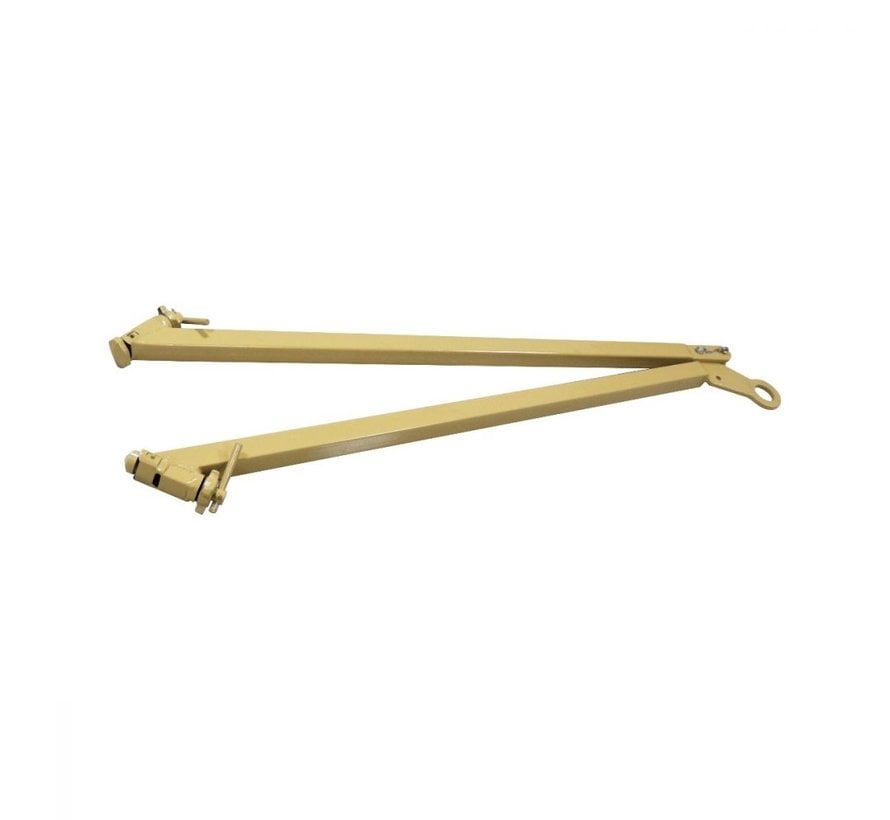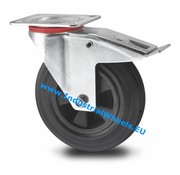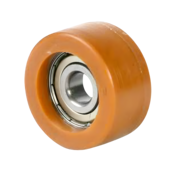PROD ID: 111JPTB25
A shipping container tow bar is designed to tow containers or platforms with ISO corners using vehicles like forklifts or tractors. Ideal for use in warehouses, manufacturing facilities, and yards.
Our foldable shipping container tow bar couplings are the most popular as they fit the most common type of ISO corners and make a great combination with our ISO castors wheel systems. See related products. For specific applications or dimensions, please contact us. We are specialists in custom configurations.
A handy guide on foldable shipping container tow bar
If you're not familiar with the world of towing, then choosing the right Tow bar for a shipping container can be a bit of a daunting experience. Your head might be boiling up with several questions like What is a towbar? How does it work, and is it easy to set up? All questions that will without a doubt overwhelm a towbar beginner.
Don't worry now; this guide entails everything from what a tow bar is, to a step-by-step guide on how to use it and why it is used.
What is a Shipping Container Tow Bar?
A tow bar is a system that connects a vehicle, such as a forklift truck, tractor, or tug, to a shipping container with ISO corners for flat towing. To connect the two objects, it uses a shank, pivoting arms, and attachment tabs. The pivoting arms on the container side are standard connectors for the iso 1161 corners of shipping containers. They always fit.
How do Tow Bars work?
A tow bar connects the front of the container to the back of the tug or forklift to tow the container. The container must be equipped with wheels, ISO castors, or placed on a platform for mobilization and stock and available on industrialwheels.com. To maneuver and navigate corners in narrow spaces, we recommend installing the container with ISO castors as these offer the most options to position the container.
How to Set Up a Tow Bar for ISO Container Towing
Step 1: Park on a level surface
Begin by putting your container on wheels and make sure it is on a level, flat surface with enough room to pull and maneuver. Place the tow vehicle (tractor, tug, or forklift) in the park and use the emergency brake.
Step 2: Mount the tow bar on the container
Place the two tow bar arms inside the shipping container. Then, use a pin and clip to protect it. Some tow bars have two or more pinholes in the arms, allowing for additional clearance if necessary. It is best to use the tow bar in the shortest position possible.
Step 3: Park your towing vehicle ahead of the container.
Slowly move your towing vehicle ahead of the container, keeping them as parallel as possible. When the towing vehicle is in the approximate tug spot, come to a complete stop, place the towing vehicle in the park, and apply the emergency brake.
Step 4: Attach the Shank to the towing vehicle
Connect the tow bar shank to the towing vehicle. If in place, use lynchpins to protect the shank and tab connections.
Step 5: Prepare the container for towing.
Set the container for towing with the tow bar mounted and ask the towing vehicle driver to pull it. And sure to obey all of the manufacturer's instructions.
How to disconnect a tow bar
Step 1: Park on a level surface
Before attempting to detach your towing vehicle tow bar, ensure that both the towing vehicle and the container are parallel and parked on a flat surface. If you try to disconnect your towing vehicle at an extreme angle, the tow bar can tie. Also, make sure that each vehicle is in the park and that the emergency brake is engaged.
Step 2: Release the tow bar arms.
To unlock the locking mechanism, pull up on the latches of the tow bar arms. To detach the arms from the base plate, remove the lynchpins from the attachment tabs. The arms of the foldable tow bar can be retracted by retaining the latch mechanism and sliding the arms in.
Now you know how to set up and disconnect a tow bar, let's see the precautions one must follow when doing this process!
Precautions to take!
- It is a wise idea to block the wheels in the event of an unnoticed slope gradient.
- Always use suitable iso castors on a flat surface to allow for quick and safe container movement.
- Maintain a clear swept transportation route; our forklift sweeper is a great accessory to consider a Container tow bar.
- Before installing your ISO Container Moving System, make sure the transportation route is clear of obstacles.
Towbar Maintenance Guidelines
Towbars usually require minimum maintenance, but some simple aftercare services will pay dividends for them.
- Ensure that after using the cover on the removable towbar (the bit that is mounted on the towing vehicle) is replaced so that corrosion is minimized and fitting is facilitated.
- Lubricate the mount pivot swiveling socket from time to time.
Why an IndustrialWheels.com Towbar?
1. Ease of use
This towbar approach is extremely user-friendly and can be put to use in a matter of seconds. This towbar is as easily accessible as it is tucked away behind the bumper. This retractable approach offers two significant advantages. Unlike the detachable towbar, you would not have to dismount and stack this towbar anywhere else. Furthermore, when stored behind the bumper, this towbar is invisible in almost any kind of vehicle.
2. Safety
A fixed towbar is commonly assumed to be a more robust and secure solution than a retractable towbar. This is untrue. The foldable towbar is as secure and robust as the fixed towbar. The ball to which you attach your forklift truck, tractor, or tug stays attached to the container at all times. This means it will never come loose while driving.
Summary
Hopefully, now you are very well aware of the tow bar, as it consists of two arms along with a shank. You may be wondering where to reach out to get the best tow bars; if so, you would love to buy the tow bar from Industrial Wheels. As they strive to serve high-quality products, they also provide fast delivery.












